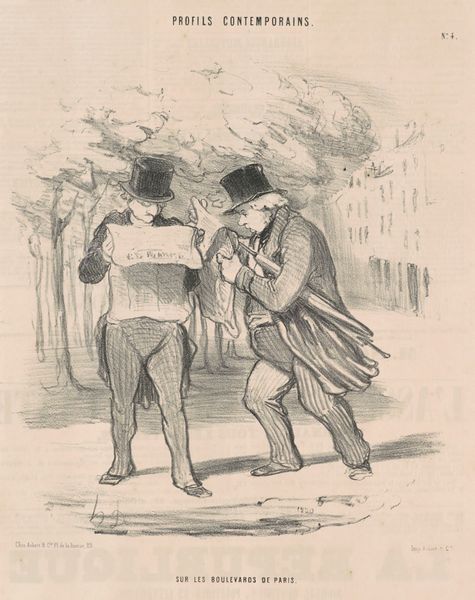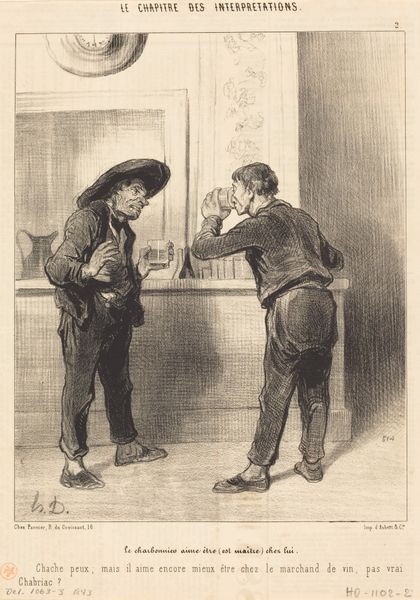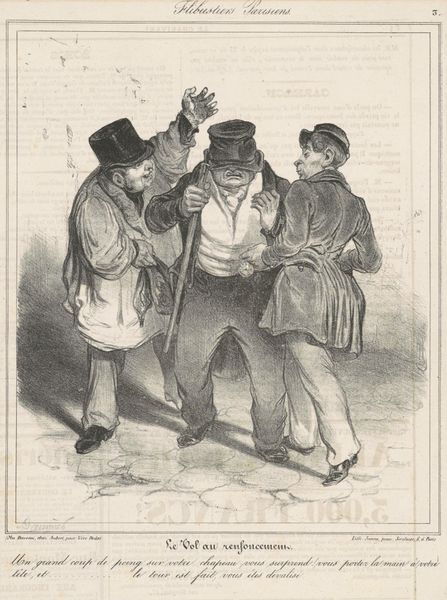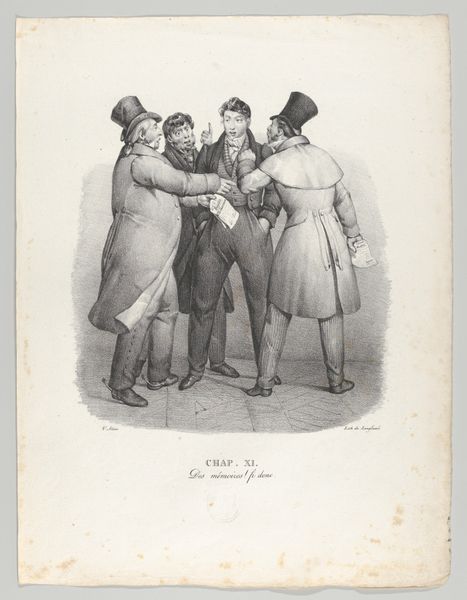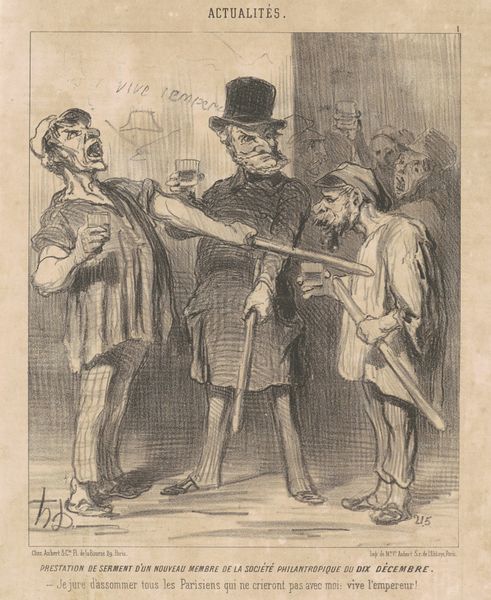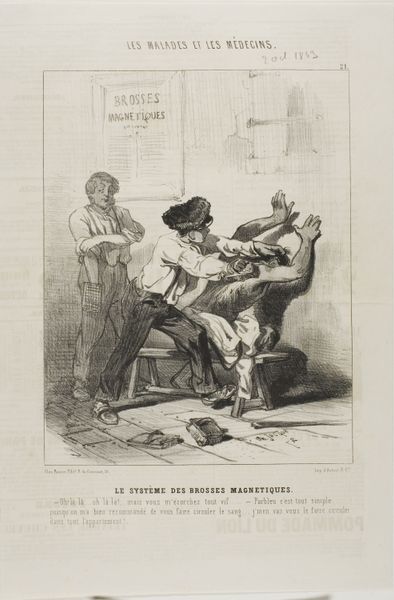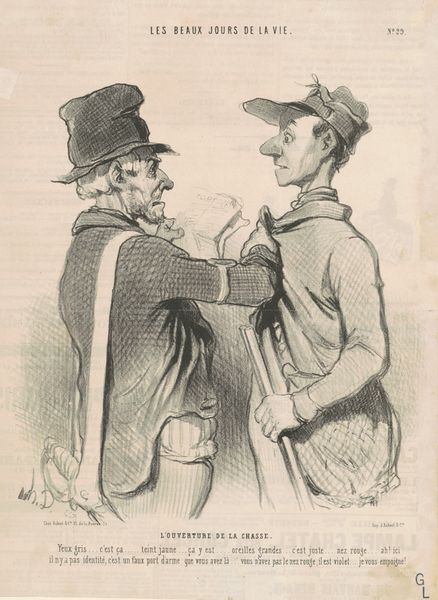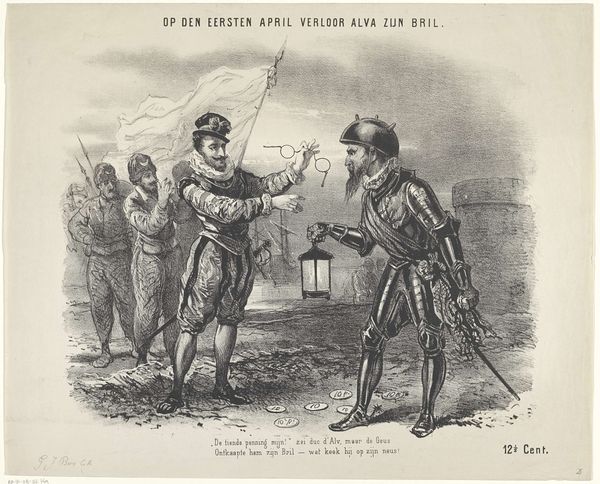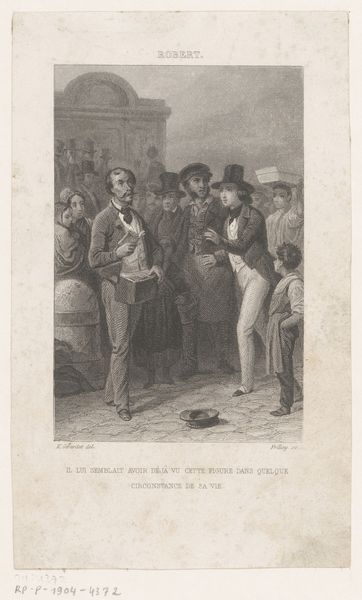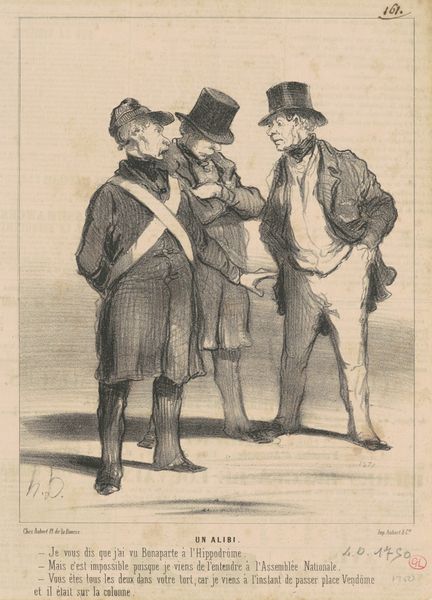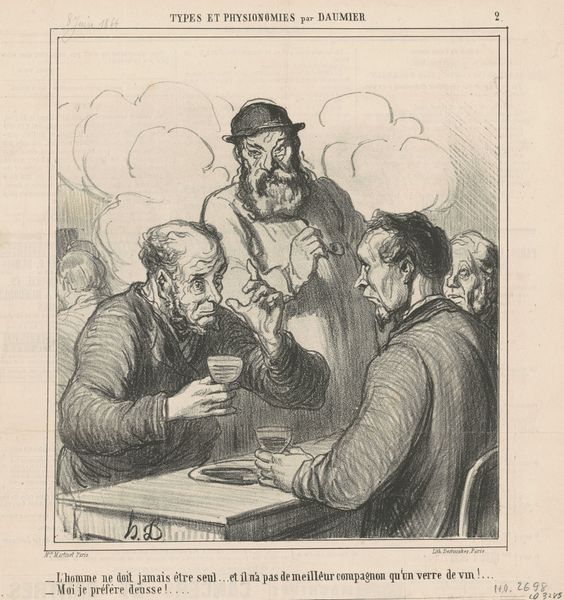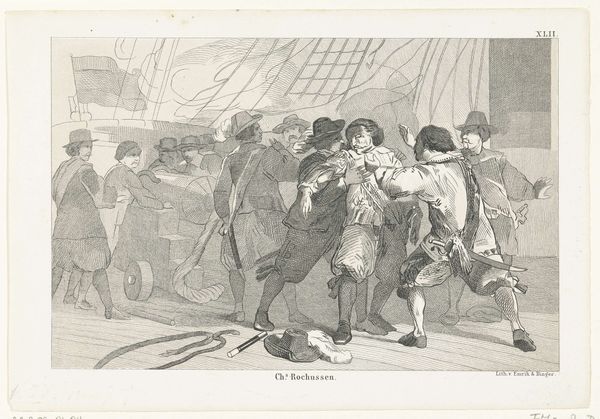
Thanksgiving Day in the Army – After Dinner: The Wish-Bone (from "Harper's Weekly," Vol. VIII) 1864
0:00
0:00
drawing, print, pencil
#
pencil drawn
#
drawing
# print
#
pencil sketch
#
war
#
pencil drawing
#
soldier
#
pencil
#
genre-painting
#
history-painting
Dimensions: image: 9 1/4 x 13 7/8 in. (23.5 x 35.2 cm) sheet: 10 7/16 x 16 1/8 in. (26.5 x 41 cm)
Copyright: Public Domain
Editor: This drawing, “Thanksgiving Day in the Army – After Dinner: The Wish-Bone,” from 1864 by Winslow Homer, made with pencil and print, feels simultaneously relaxed and somber to me. The level of detail is astounding, capturing the texture of their clothing and the roughness of the camp. What strikes you when you look at this? Curator: What grabs my attention is how this print, intended for mass consumption through "Harper's Weekly", functions as a subtle form of social commentary during wartime. Consider the materials—pencil drawings reproduced as prints. Homer isn't presenting an idealized vision of heroism, but a quotidian scene accessible to a broad audience. How does this accessibility influence the artwork's social role during wartime, shaping public perceptions of the soldier's experience? Editor: I see what you mean. It wasn't a unique painting made for the wealthy; it was mass-produced and aimed to connect with people who were potentially making sacrifices for the war, and possibly waiting at home. How would the readers perceive the representation of leisure and celebration within the context of the Civil War? Curator: Exactly! Consider too, how Homer uses the very materials to convey a specific experience. The roughness of the print mirrors the harsh reality of army life. Notice also, there is an implied labor; it is present in the soldiers who are engaged with everyday, repetitive acts, and there is Homer's labor that allows us to think through what these different actions may imply. How does that shift our understanding from a heroic narrative to something more…real? Editor: That is a great point, the artist's labor of production echoes the soldier's labor. I didn't think of it that way initially! The mundane act of pulling a wishbone becomes much more significant when considering the print's production and reception context. Thank you. Curator: And thanks to you. Thinking about the artwork with a modern-day sensibility of access and dissemination gives one more point of view of the choices behind material and social intent.
Comments
No comments
Be the first to comment and join the conversation on the ultimate creative platform.
